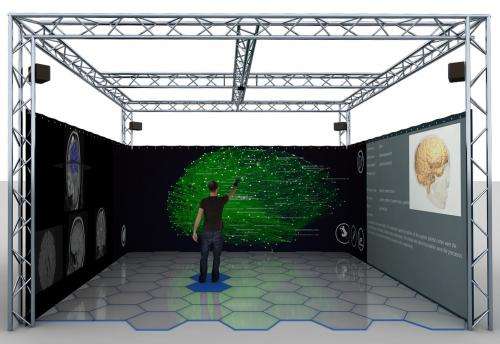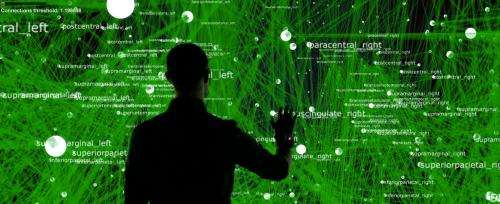Addressing the human brain's big data challenge with BrainX3

The human brain generates massive amounts of data resulting from its intricate and complex spatiotemporal dynamics. Biophysical mechanisms underlying these processes are key to our understanding of brain function and disease. To address this challenge, researchers at the SPECS lab lead by Prof. Paul Verschure, have recently developed BrainX3, a platform for visualization, simulation, analysis and interaction of large data, that combines computational power with human intuition in representing and interacting with large complex networks. BrainX3 serves as a hypotheses generator of big data. As is often the case with complex data, one might not always have a specific hypothesis to start with. Instead, discovering meaningful patterns and associations in big data might be a necessary incubation step for formulating well-defined hypotheses.
On this platform, the researchers have reconstructed a large-scale simulation of human brain activity in a 3D virtual reality environment. Using the brain's known connectivity along with detailed biophysics, the researchers reconstruct neuronal activity of the entire cortex in the resting-state. Users can interact with BrainX3 in real-time by perturbing brain regions with transient stimulations to observe reverberating network activity, simulate lesion dynamics or implement network analysis functions from a library of graph theoretic measures. Within the immersive mixed/virtual reality space of BrainX3, users can explore and analyze dynamic activity patterns of brain networks, both at rest or during tasks, or for discovering of signaling pathways associated with brain function and/or dysfunction or as a tool for virtual neurosurgery.
In addition to the dynamics of the resting state, the researchers have also simulated neural activity from lesioned brains and activity resulting from TMS perturbations. These simulations shed insight on the spatial distribution of activity in the attractor state, how the brain maintains a level of resilience to damage, and effects of noise and physiological perturbations. Knowledge of brain activity in these varied states is clinically relevant for assessing levels of consciousness in patients with severe brain injury.

More information: "Network Dynamics with BrainX[sup]3[/sup]: A Large-Scale Simulation of the Human Brain Network with Real-Time Interaction." Xerxes D. Arsiwalla, Riccardo Zucca, Alberto Betella, Enrique Martinez, David Dalmazzo, Pedro Omedas, Gustavo Deco and Paul F.M.J. Verschure. Frontiers in Neuroinformatics. journal.frontiersin.org/articl … .2015.00002/abstract
Provided by Universitat Pompeu Fabra



















